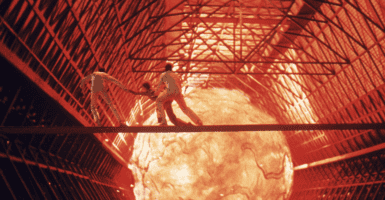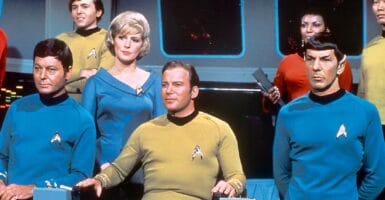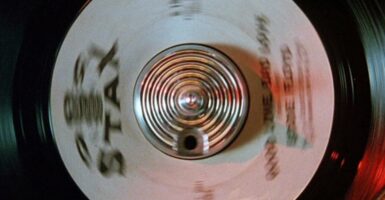Read Free Science Fiction From Arthur Conan Doyle, Jack London, And More
This article is more than 2 years old
 Those names in the headline aren’t ones you typically associate with science fiction, but the folks at HiLoBooks make a compelling argument that some of their works fall squarely amidst the “Radium Age” of Science Fiction. Don’t feel bad: I hadn’t heard that term either, and I run a science fiction website. The HiLo folks argue that, in the years between the early masters who created the genre — H.G. Wells, Jules Verne, Mary Shelley — and the “Golden Age” generally considered to have commenced with John W. Campbell becoming editor of Astounding in 1937, there was a whole span of science fiction stories they’ve dubbed the “Radium Age.” I like it. It’s got pizazz. Even better than the pizazz, you can read HiLo’s serialized installments of Radium Age SF by the likes of Jack London, Rudyard Kipling, Arthur Conan Doyle, and more, all online…and all for free.
Those names in the headline aren’t ones you typically associate with science fiction, but the folks at HiLoBooks make a compelling argument that some of their works fall squarely amidst the “Radium Age” of Science Fiction. Don’t feel bad: I hadn’t heard that term either, and I run a science fiction website. The HiLo folks argue that, in the years between the early masters who created the genre — H.G. Wells, Jules Verne, Mary Shelley — and the “Golden Age” generally considered to have commenced with John W. Campbell becoming editor of Astounding in 1937, there was a whole span of science fiction stories they’ve dubbed the “Radium Age.” I like it. It’s got pizazz. Even better than the pizazz, you can read HiLo’s serialized installments of Radium Age SF by the likes of Jack London, Rudyard Kipling, Arthur Conan Doyle, and more, all online…and all for free.
Each of HiLo’s Radium Age selections is gradually serialized on their website, then eventually collected as a very snazzy paperback, complete with new original cover artwork and introductions/afterwords by folks such as Bruce Sterling. Honestly, I’m seriously considering buying the lot of these, simply because it’s an intriguing slice of science fiction history that I don’t know much about, and most of these stories I’ve never even heard of, which makes them all the more enticing to me. Seriously, a post-apocalyptic pandemic story by the guy who wrote Call of the Wild? The “original cyborg novel”? Sign me up!
We’ve got the rundown of all the currently available Radium SF books below. Check ‘em out if you feel so inclined. I’ll be in the corner, drooling over the cover art.
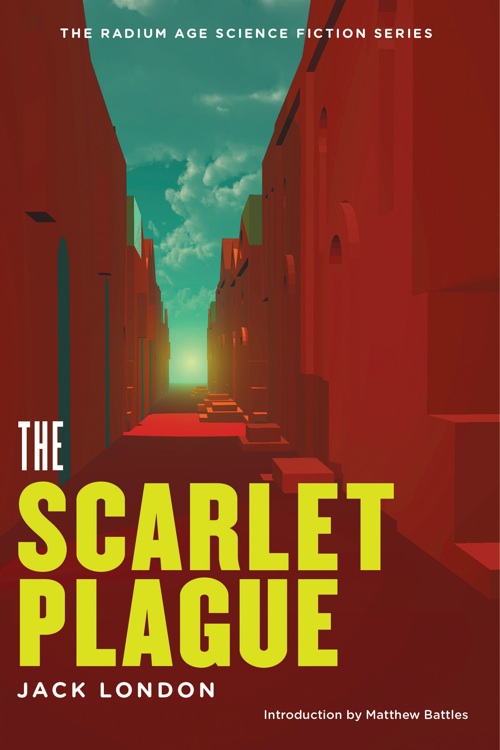 ”The Scarlet Plague” by Jack London
”The Scarlet Plague” by Jack London
Outside the ruins of San Francisco, a former UC Berkeley professor recounts the chilling sequence of events — a gruesome pandemic which killed nearly every living soul on the planet, in a matter of days — which led to his current lowly state. Modern civilization has fallen, and a new race of barbarians, descended from the world’s brutalized workers, has assumed power. Over the space of a few decades, all learning has been lost.
The catastrophe happens in 2013; 2012 marks the centennial of the novel’s first publication.
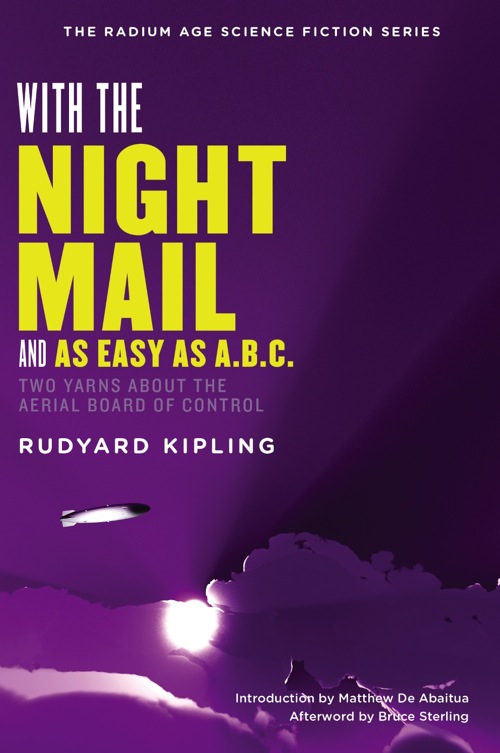 “With the Night Mail” and “As Easy As A.B.C.” by Rudyard Kipling
“With the Night Mail” and “As Easy As A.B.C.” by Rudyard Kipling
Rudyard Kipling’s With the Night Mail follows the exploits of an intercontinental mail dirigible battling the perfect storm. Between London and Quebec we learn that a planet-wide Aerial Board of Control (A.B.C.) now enforces a technocratic system of command and control not only in the skies but in world affairs. A follow-up story, ‘As Easy As A.B.C.,’ recounts what happens when agitators in Chicago demand the return of democracy.
With the Night Mail is set in 2000, and it first appeared in 1905; 2012 marks the centennial of the first publication of ‘As Easy As A.B.C.’
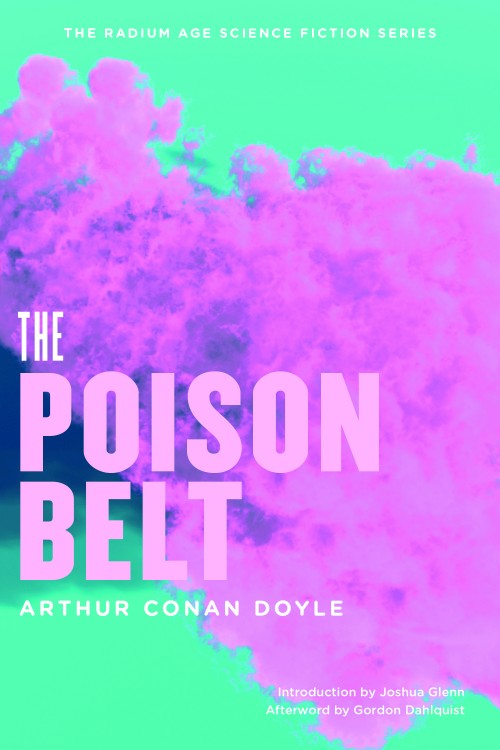 “The Poison Belt” by Arthur Conan Doyle
“The Poison Belt” by Arthur Conan Doyle
If you alone had discovered that the Earth was about to be engulfed in a belt of poisonous ‘ether’ from outer space, what would you do? Professor Challenger, a controversial scientist whose intellectual sprezzatura may remind you of Arthur Conan Doyle’s more famous fictional detective character, assembles the adventurers with whom he’d once romped through a South American jungle (in The Lost World, published in 1912) and locks them in his wife’s dressing room. Less a thriller than a brainteaser set against a catastrophic backdrop, in this 1913 sequel Challenger & Co. inquire into the method of the mind, and the relationship of intuition to reason, even as the world ends.
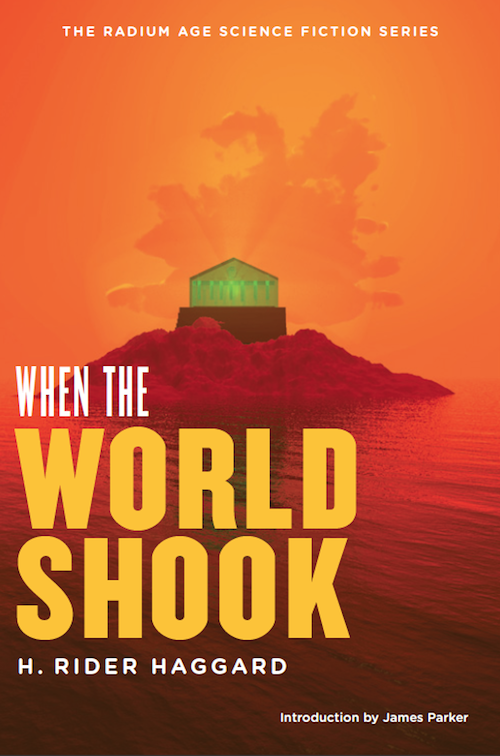 “When the World Shook” by H. Rider Haggard
“When the World Shook” by H. Rider Haggard
When adventurers Bastin, Bickley, and Arbuthnot are marooned on a South Sea island, they discover two Atlanteans in a state of suspended animation. One of the awakened sleepers, Lord Oro, is a superman — the last king of the Sons of Wisdom, who’d relied on hyper-advanced technology to subjugate the planet’s lesser peoples. The other is Oro’s sexy daughter, Yva… who falls in love with Arbuthnot. Using astral projection, Lord Oro visits London and the battlefields of the Western Front. Why? To determine whether or not he should once again employ an infernal chthonic machine to drown the worthless human race, as he’d done 250,000 years earlier!
The novel, which Rudyard Kipling helped plot, was first published in 1919.
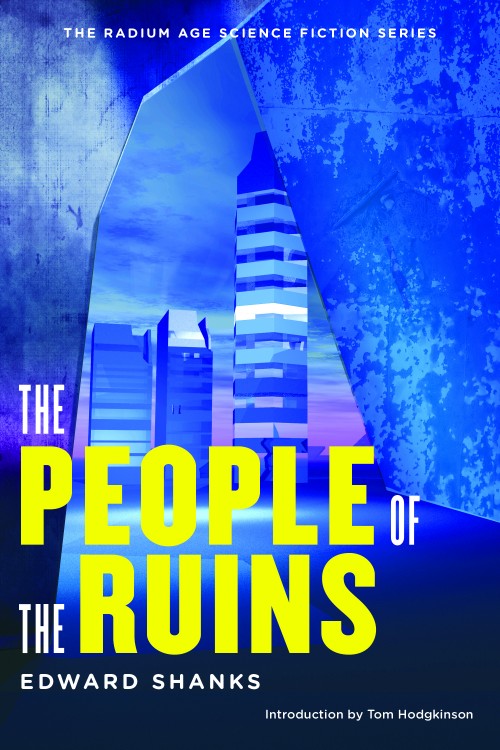 “The People of the Ruins” by Edward Shanks
“The People of the Ruins” by Edward Shanks
Trapped in a London laboratory during a worker uprising in 1924, scientist and ex-artilleryman Jeremy Tuft awakens 150 years later — on the eve of a new Dark Age! Though dismayed by the realization that his own era’s faith in the inevitability of progress was a shibboleth, Tuft decides that pre-modern life is simpler, more peaceful. That is, until half-savage northern English and Welsh tribes invade London… at which point he sets about reinventing twentieth century weapons of mass destruction.
Shanks’ proto-Idiocracy satire on William Morris-esque utopias was first published in 1920.
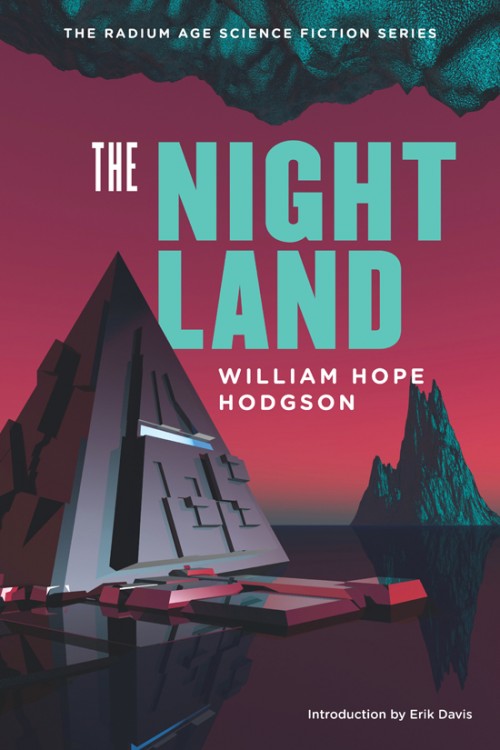 “The Night Land” by William Hope Hodgson
“The Night Land” by William Hope Hodgson
In the far future, what remains of the human population dwells deep below the Earth’s frozen surface in a pyramidal fortress-city that for centuries has been surrounded by giants, “ab-humans,” enormous slugs and spiders, and malevolent Watching Things from an alien dimension. When the novel’s unnamed protagonist receives a telepathic distress signal from a young woman whom (in a previous incarnation) he’d once loved, he sallies forth on an ill-advised rescue mission — into the uncharted and unfathomable Night Land.
The Night Land was first published in 1912. The HiLoBooks edition omits two sections — a prefatory conceit, and a lengthy dénouement — which have helped prevent Hodgson’s masterpiece from reaching a wider audience.
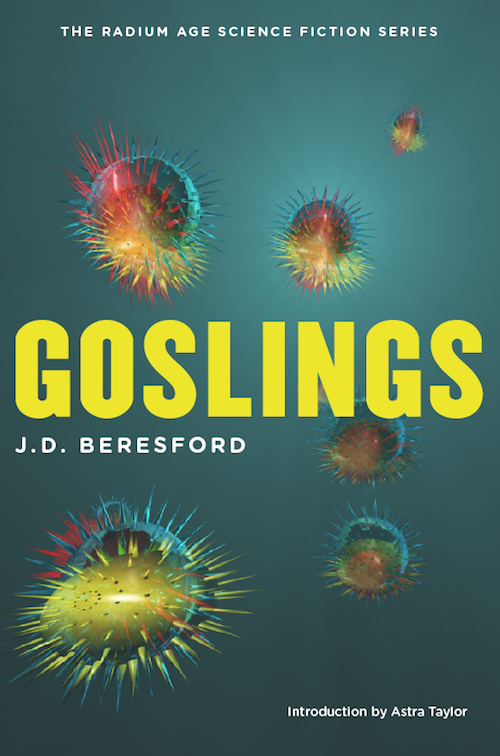 “Goslings” by J.D. Beresford
“Goslings” by J.D. Beresford
When a plague kills off most of England’s male population, the proper bourgeois Mr. Gosling abandons his family for a life of lechery. His daughters — who have never been permitted to learn self-reliance — in turn escape London for the countryside, where they find meaningful roles in a female-dominated agricultural commune. That is, until the Goslings’ idyll is threatened by their elders’ prejudices about free love!
J.D. Beresford was an English dramatist, journalist, and author. His science fiction novels include The Hampdenshire Wonder (1911) and The Riddle of the Tower (1944, with Esme Wynne-Tyson). His daughter Elisabeth was author of a series of children’s books about The Wombles.
Beresford’s friend the poet and novelist Walter de la Mare consulted on Goslings, which was first published in 1913.
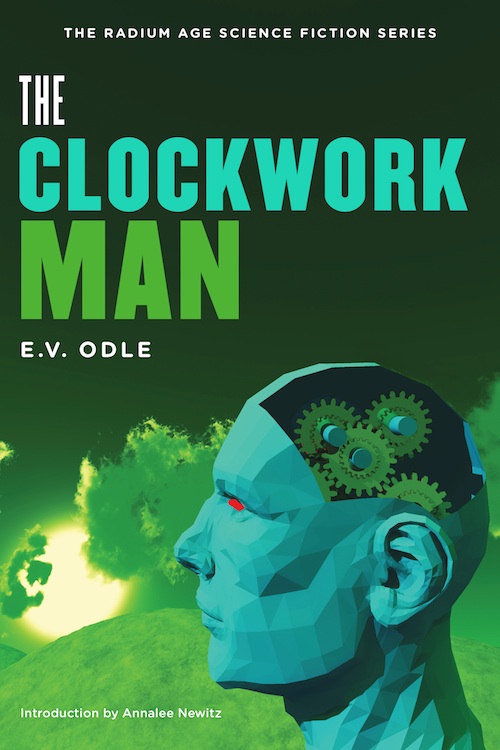 “The Clockwork Man” by E.V. Odle
“The Clockwork Man” by E.V. Odle
Years from now, advanced beings known as the Makers will implant clockwork devices into our heads. At the cost of a certain amount of agency, these marvelous devices will permit us to move unhindered through time and space, and to live perfectly regulated lives. However, if one of these devices should ever go awry, a “clockwork man” from the future might turn up in the 1920s, perhaps at a cricket match in a small English village.
Rumors that “E.V. Odle” was a pen name for Virginia Woolf are amusing, but unfounded. Edwin Vincent Odle (1890–1942) was a playwright, critic, and short-story author who lived in Bloomsbury, London during the 1910s; his brother, Alan, was a well-known illustrator and eccentric. From 1925–35, he was editor of the British short-story magazine The Argosy.
Considered the original cyborg novel, The Clockwork Man was first published in 1923 — the same year as Karel Čapek’s pioneering android play, R.U.R.
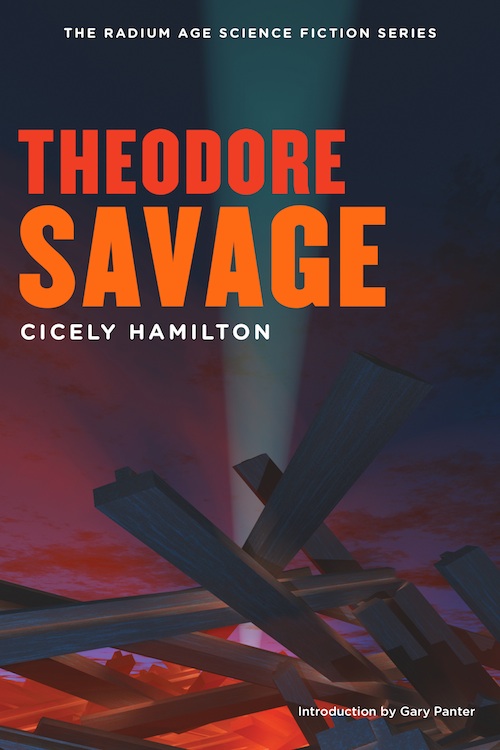 “Theodore Savage” by Cicely Hamilton
“Theodore Savage” by Cicely Hamilton
When war breaks out in Europe — modern, aerial war whose tactics include displacing entire populations — British civilization collapses overnight. The ironically named Theodore Savage, an educated and idle civil servant, must learn to survive by his wits in a new Britain… one where science and technology swiftly come to be regarded with superstitious awe and terror.
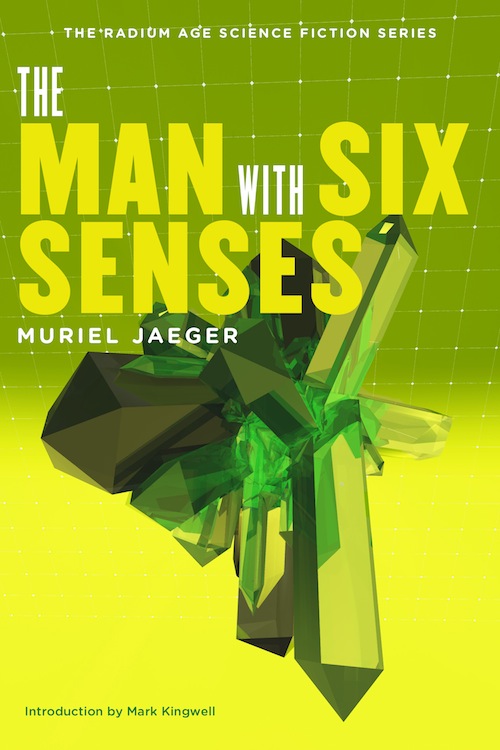 “The Man with Six Senses” by Muriel Jaeger
“The Man with Six Senses” by Muriel Jaeger
When Hilda, a beautiful young member of England’s cynical postwar generation, meets Michael, a hapless mutant capable of perceiving the molecular composition of objects and the ever-shifting patterns of electromagnetic fields, she becomes his apostle. However, her efforts to convince others of the prodigy’s unique importance end disastrously; and Michael himself is slowly destroyed — mentally and physically — by his uncanny gift. In the end, Hilda must decide whether she is willing and able to make a supreme sacrifice for the sake of humankind’s future.
Muriel Jaeger (1892–1969) was a British historian and social critic (Before Victoria). Her science fiction books include The Question Mark (1926), an ambiguous utopia that likely influenced Aldous Huxley; Hermes Speaks (1933); and Retreat From Armageddon (1936). This early and brilliant effort to export the topic of extra-sensory perception out of folklore and occult romances and import it into science fiction was first published in 1927 — by Leonard and Virginia Woolf’s Hogarth Press.



